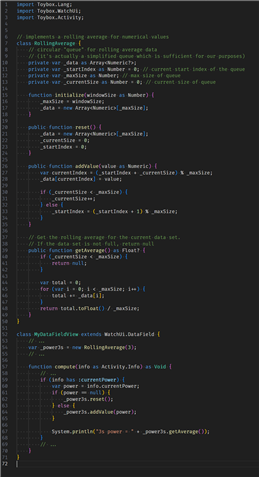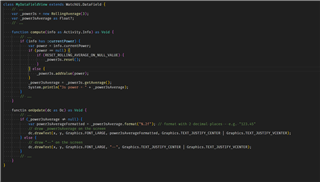Hello everyone,
I am pretty noob in programming but I managed to create a (even rather complex) cycling Datafield.
The only thing I am missing is that I would like to display a 3s average power instead of currentPower, but due to my poor programming knowledge I don't know how can I do it.
Is there anyone willing to help and share a piece of code?
I found a couple of similar questions in the forum but they are from several years ago and I am not able to integrate that code in my datafield (VSC throws several errors).
Thank you!






